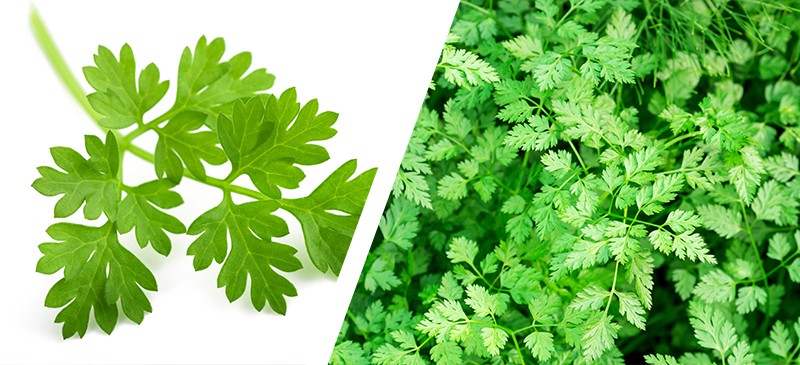This Dr. Axe content is medically reviewed or fact checked to ensure factually accurate information.
With strict editorial sourcing guidelines, we only link to academic research institutions, reputable media sites and, when research is available, medically peer-reviewed studies. Note that the numbers in parentheses (1, 2, etc.) are clickable links to these studies.
The information in our articles is NOT intended to replace a one-on-one relationship with a qualified health care professional and is not intended as medical advice.
This article is based on scientific evidence, written by experts and fact checked by our trained editorial staff. Note that the numbers in parentheses (1, 2, etc.) are clickable links to medically peer-reviewed studies.
Our team includes licensed nutritionists and dietitians, certified health education specialists, as well as certified strength and conditioning specialists, personal trainers and corrective exercise specialists. Our team aims to be not only thorough with its research, but also objective and unbiased.
The information in our articles is NOT intended to replace a one-on-one relationship with a qualified health care professional and is not intended as medical advice.
What Is Chervil? Benefits, Uses + Recipes
December 7, 2019

If you’re a fan of French cuisine or cooking, you may be familiar with chervil, a green herb in the parsley plant family that’s also related to cilantro. It’s one herb used to make the classic French seasoning mix called the “fines herbes blend” — along with parsley, tarragon and chives — that flavor recipes like chicken dishes and salad dressings.
Additionally, it’s used in natural medicine as a blood-thinning, anti-hypertensive and digestive-soothing herb. For hundreds of years it’s been added to tonics, teas and skin preparations for its inflammatory effects and ability to relieve fluid retention.
More recently, studies have found that chervil has antioxidant, free radical-scavenging and membrane-protective properties, thank to its volatile oils and phytochemicals. That’s why, similar to parsley benefits and cilantro benefits, this herb can help support health.
What Is Chervil?
Chervil (Anthriscus cerefolium), sometimes called French parsley, is a herb that’s used for both culinary and medicinal purposes (as many herbs and spices are). Chervil leaves are green, delicate and curly.
If you know what flat-leaf parsley or carrot greens look like, chervil has a similar appearance, only it’s a bit paler green. It also grows small white flowers.
What does chervil taste like? It has a mild taste that some describe as a “cross between tarragon and parsley,” with hints of anise/licorice.
Its smell is “delicate” and light, meaning it won’t overpower other flavors in recipes, such as fine olive oils or other herbs.
Where does chervil grow? As a member of the Apiaceae plant family, it’s a European species that was later introduced to Asia, North America and elsewhere.
The Herb Chervil vs. Wild Chervil
Note that Anthriscus cerefolium is different than other types of wild chervil plants (such as A. caucalis and A. sylvestris) that are mostly considered to be weeds. The herb chervil is sometimes called “garden chervil” to distinguish it from similar plants that are not usually eaten.
There are at least 14 known chervil species that have been recognized (and more than 80 that are believed to be in existence), which are classified into four main varieties: garden, root, wild and bur chervils.
According to the Extension Forage Specialist at the University of Vermont, wild chervil is becoming a serious problem in hay fields and pastures, as it “competes aggressively with forage crops for light, water and nutrients and often kills off the surrounding vegetation by shading it.”
Uses
The most popular use for chervil is in cooking, especially French cuisine. You’ll find it in omelets and other egg recipes, salads, soups and Béarnaise sauce (a rich, buttery, aromatic sauce made with shallots, tarragon or chervil and black peppercorns).
Aside from cooking with chervil, the leaves and flowers of this plant also have certain medicinal uses. Like other herbs that it’s related to, it has a long history of use in folk medicine, as well as homeopathic, naturopathic medicine and Ayurvedic medicine.
Recent studies show that chervil species are sources of essential oils that can treat gastrointestinal ailments, respiratory issues, joint and muscle pain, and more.
Where can you buy chervil?
It’s not always easy to find fresh chervil in super markets, especially compared to its cousins parsley and cilantro. Look for it in specialty or gourmet markets that specialize in French cooking.
Chervil is an early spring herb, so it’s usually available during months of the year with a mild or cool climate (this depends on where you live). Once the climate become warm when summer is approaching, the plant will start to develop bitter flowers and blossoms, which aren’t used to cook with due to their unpleasant taste.
Interested in growing chervil?
If you already have an herb garden, this is an easy plant to add. Try growing it in small pots on your windowsill or in the ground in a location that gets a mixture of sun and shade and remains moist/cool.
If growing from seeds, plant the seeds in the spring or late fall, and then sow the seeds every three to four weeks. You’ll want to harvest this herb when the leaves are open, tender and pale green.
Use them fresh, dry them or even freeze them for later use.
Benefits
While research regarding its medicinal benefits is limited overall, according to articles published in the Asian Journal of Plant Sciences and other journals, there’s some evidence that chervil benefits may include:
- Acting as a natural digestive aid, helping settle the stomach
- Acting as a mild stimulant and mood-lifter
- Reducing fluid retention/edema, as it acts as a natural diuretic to increase urine discharge
- Treating menstrual cramps
- Treating coughs and acting as an expectorant, since it facilitates secretion of mucus from the respiratory system
- Lowering high blood pressure
- Helping reduce hiccups when combined with vinegar
- Managing gout symptoms
- Supporting joint health
- Supporting liver function
- Treating pockets of infection (abscesses)
- Relieving eczema symptoms, hemorrhoids, cellulite and varicose veins — it may also help reduce redness, swelling, injuries and scars affecting the skin, which is why it’s found in some natural skin cleansers, lotions and blemish treatments
- Treating irritation of the eyes
It’s believed that many of the same benefits attributed to parsley are also true of chervil. Chervil contains active constituents in the form of volatile oils and antioxidants like flavonoids and coumarins that give it these health-promoting effects.
Two of the most prominent constituents present in this herb are methyl chavicol (or estragole, which is also found in basil) and hendecane (undecane).
Various types of chervil species have also been found to contain deoxypodophyllotoxin, which one study published in the journal Molecules states has been “proven to have antitumor and anti-proliferative effects, anti-platelet aggregation, antiviral, anti-inflammatory and insecticidal activity.”
Another interesting fact about the volatile oil extracted from chervil leaves is that it has a similar smell as myrrh oil, which is why chervil was once called “myrrhis.”
Nutrition
One tablespoon (about two grams) of dried chervil spice contains approximately:
- 4.1 calories
- 0.9 grams carbohydrates
- 0.4 grams protein
- 0.1 gram fat
- 0.2 grams fiber
- 0.6 milligrams iron (3 percent DV)
- 102 international units vitamin A (2 percent DV)
- 23.6 milligrams calcium (2 percent DV)
- 83 milligrams potassium (2 percent DV)
In addition, this herb contains some vitamin C, folate, magnesium, phosphorus, zinc, selenium and more.
Recipes
Use chervil to enhance the flavor of mild-flavored foods like white fish, chicken, eggs and spring vegetables. When cooking with fresh chervil, it’s recommended to add the herb to recipes at the last minute as a garnish, since its flavor tends to be lost when it cooks too much.
Try chervil in some of these healthy recipes below:
- Kerbelsuppe (Cream of Chervil Soup)
- Herb infused oil
- Herb butter
- Herb pesto
- Bearnaise sauce
- Salad with microgreens
- Turkey with herbs (parsley, sage, rosemary and thyme)
- Baked herb potatoes
- Herb and almond-crusted fish recipe
- Garden frittata recipe
In terms of medicinal preparation methods, you can use this herb just like you would parsley to make a digestive-aid tea, tincture or extract. Try replacing some of the parsley in this parsley tea recipe with chervil instead (use about 2 to 4 tablespoons of fresh herbs with 2 cups of hot water).
Substitutes
What herb is most similar to chervil? As you’ve probably guessed by now, it’s parsley.
What can you use as a substitute for parsley? Fresh parsley or tarragon or a combination of the two make good stand-ins.
Although they have more of an onion-like taste, chives also work, or you can try dill (especially in egg recipes).
Risks and Side Effects
Some people may experience skin rashes and symptoms of contact dermatitis when coming into contact with plants in the Apiaceae family. If you’ve had a negative reaction to parsley or cilantro in the past, be careful when touching or eating chervil, which tends to have similar effects.
Conclusion
- What is chervil? It is an herb in the parsley family that is used in cooking (mostly French cuisine) and also folk medicine.
- Although research focused on this herb is limited compared to related herbs, it’s believed that benefits associated with chervil include soothing the digestive system, reducing edema, treating skin conditions, decreasing menstrual pains, lowering high blood pressure, reducing inflammation, fight free radical damage and more.
- Popular in french recipes, you can use this herb to flavor mild foods like fish, chicken, eggs, salads, vegetables and soups. It’s commonly used in cream sauces, salad dressings, herb pestos and herb butters.
- If you’re in need of a chervil substitute, try parsley, tarragon, dill weed or chives instead.









